By Felix Ruckert
This is an article reprinted from Dance Theatre Journal: Special Edition on Sex and Performance, an academic but user friendly publication by the Laban Centre in London, which Tessa Wills co-edited with Doran George in 2013. We used the festival THIS IS WHAT I WANT as a lens through which to reveal the field of the intersection between radical sexual practice and radical performance practice in the Bay Area, and our work. Read the other articles here.
As Germans we like definition, analysis and categories. It is important for our mentality to draw lines, erect fences and build walls. No grey zones allowed. Our cautious, cowardly and over sensitive souls need defenses, we love to build intellectual castles and erect dogmatic watch towers. We enjoy to observe from the distance, we excel in taking the careful steps necessary in the mine fields of debate.
Occasionally we tear down walls, too. It just takes us extensive reflection and sufficient discomfort to get to that point. So far the stereotype, and I will be faithful to it.
Invited by this magazine to give my perspective on the community here that is working with the interface between dance performance and alternative sexual practice my first thought was: there is still a wall separating Berlin, a wall between institutional art and the realms of alternative sexualities. Institutions and locations funded with public money may display art that is aesthetically influenced and inspired by ‘practices of alternative sexuality’ but they are not inviting in neither ‘sexuality’ nor ‘practice’.
And what is the sexual alternative community? Not so easy to fence in. [pullquote]If I want to include all Berliners that practice a sexuality off the mainstream I might end up with an actual majority.[/pullquote] Do I have to include our openly gay Governing Mayor? The middle class couples frequenting swinger clubs? The sexworkers on Oranienburgerstrasse that give this tourist run way the (in)famous Berlin touch? The esoteric circles experimenting with Tantra and Sacred Sexuality. The hedonist crowd that fills the numerous fetish clubs? The various Dojos dedicated to Japanese Bondage? The private associations run by Old School sadomasochists? The vast queer scene with all its subdivisions?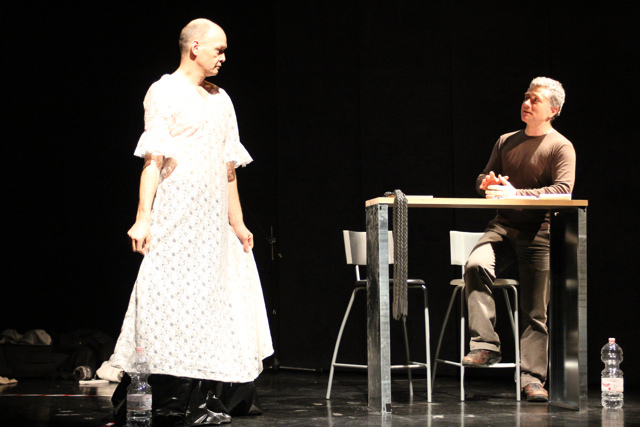
This city offers an incredible number of scenes and subcultures, all incessantly intertwining and overlapping. They all represent a different sexual culture but are they making art? No. Certainly not in the conventional view of politicians and directors of institutions.
And Yes. But only if you consider the possibility that sex is an art form in itself.
So this is my approach and I think it is still unique.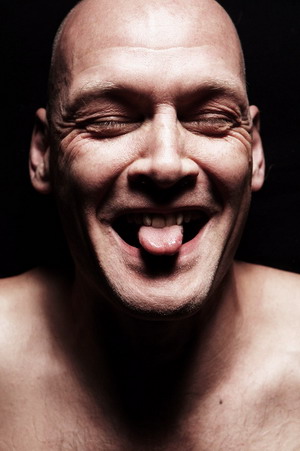
I run a venue called schwelle7 that programs dance workshops with presenters such as David Zambrano, Linda Rabin, Barbara Mahler or Julyen Hamilton alongside with workshops on sexual practices such as Fisting, Female Ejaculation and Prostrate Massage directed by known sex educators. I bring artists from Japan here such as Arisue Go, Hajime Kinoko and Osada Steve who are the leading riggers in the Kinbaku (Japanese Rope Bondage) world. I direct my own workshops that fuse those techniques.
I organize events here at schwelle7, that I consider choreography while other people would call them sex parties.
I am not the first person in Berlin to design parties.[pullquote align = ‘right’] There is a culture of party design here that has its roots in the reportedly roaring twenties[/pullquote] and which had a glamorous restart with the raves of the nineties powered by the impatient loops of electronic music. Today this tradition continues to proliferate in clubs such as Berghain, Sisyphos and Kater Holzig, just to name the latest examples of avant-garde clubs that draw thousands of people flying in from all over Europe every weekend. These places cross over with the art scene and are boosted by the latest in music, design and fashion. Sexual activities welcome.
Felix. Photo: Caritia Abell
But what about performance art? What about dancers and choreographers, the people that move and make others move? Well, where everyone is wearing costumes and going crazy on the beat it is hard to get attention.
Dancers occasionally find place in these clubs as performers, as drag queens, Go Go’s or Burlesque dancers, but they have to submit to the music. Dancing on the counter their next ambition is the stage. They finally want a platform for themselves, a theatre, the audience quiet and stay put. Their fantasies are rather conservative. They do not question the wall.
I didn’t like that. I considered my own sexuality as an art and I wanted to give it a stage. It became my obsession to create events dominated not by loud music and seductive visuals, but by physical expression first, inviting in and including all of the bodily possibilities. Create a fusion between theatre and club. Providing a space for sexuality as well. [pullquote]Where the sexual drive is not just a motor of artistic expression, but where it becomes artistic expression itself.[/pullquote]
Researching in the BDSM community was helpful. They already had it all: props and costumes, fantasy and drama, love and devotion, struggle and surrender.
In BDSM I found marvellous tools to orchestrate games, scenes and complex scenarios. I understood flow and presence better by studying the use of whips and ropes. I discovered the parallels between the transformative manipulation of emotions in dominant-submissive role play and the creation of theatrical magic. I found the missing bit, the space where your genitals are part of the game: I had not experienced that in the dance studios yet.
Cutback. In the seventies I was a teenager: it was all about sexual liberation, self expression and ecstasy. I was clubbing on Saturday and protest marching on Sunday. In the eighties when I started to study dance seriously, the hippies had been scared away by Ronald Reagan and the Sex Pistols. The lights went out. Mirrors began to disappear from the dance studios. Pina and her dancers, chain smoking, explored what moved them instead of how they moved. Other dancers started to lay down on the floor and breath. Getting dirty. The attention shifted from the surface to the inside. Emotion guided our movements, anger motivated my choreography.
Then the wall came down. Political utopia was abandoned in the nineties. Easyjet and the internet made the world shrink, expanded our existence and multiplied our identities. Communication, interaction and participation became central in my work. I started to tear down the wall that separated the audience from us, the dancers. Movement was democratized and dance proliferated in neo-folkloric forms such as Contact Improvisation, Tango Argentino and Yoga.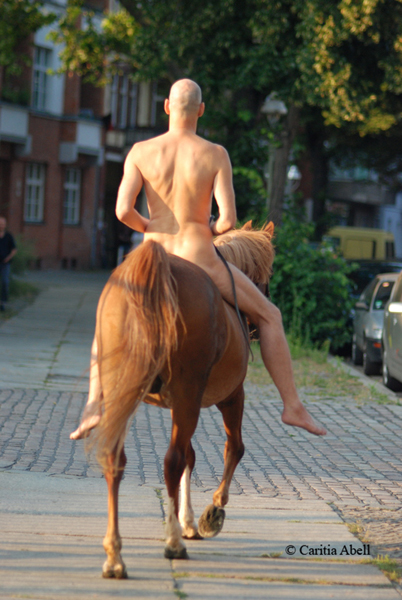
All seemed fine until some fanatics hijacked a plane and flew it into the twin towers. They seemed motivated by the perspective of entering a paradise populated by 72 virgins offering unlimited sexual services. In 1999 I choreographed provokingly intimate one-on-one encounters between audiences and performers for a theatre in Hamburg (Hautnah, 1999). Only later I learned that these guys had studied and graduated at the same time in the same city. Parallel universes.
Nothing was fine anymore.[pullquote align = ‘right’] I started to look closer at the power of sexual attraction and the sexual attraction of power[/pullquote], investigated the possibility of a political sexuality and sexual politics. I wondered. About what is always there. About the dark side. I was naive.
While dance technique had moved from muscles to bones, and kept moving on to brains and organs, I challenged the dance world by looking at the anatomy and mechanics of sexuality. When I started to use public fundings to organize workshops exploring anal sex and female ejaculation (xplore, 2004), when I encouraged my dancers to investigate sadomasochistic practices on stage (Messiah Game, 2005) I went much too far, much too quick. My funding got cut to zero in 2006, in a year’s time I disappeared from the market place and I had to reinvent my work in the private sector. I joined the alternative Berlin.
I opened my own venue schwelle7 to present the most sophisticated in dance and sexuality, following Willy Brandt‘s advice ‘to bring together what belongs together’.
Now, emancipated from the paternal protection of cultural institutions [pullquote]I found myself under the dictate of economics. More hardship, but less hypocrisy.[/pullquote]
But I still had to invent what makes schwelle7 unique and what distinguishes it from everything else: schwelle7 is not a club and not a theatre. It is a living room. I live here. Others live here. Someone is always there. You can check in anytime and stay. For a few hours, for a week or for a life. It is not a community, rather a family. A family as temporary as you wish or can support. There is the intimacy, the security and the care you only feel in a home. [pullquote align=’right’]There is also the effort, discipline and patience necessary for closeness.[/pullquote] Schwelle7 fulfils a need for affiliation missed by many. This is the frame that makes everything that happens here shine. This is what attracts people. The social sculpture.
I am lingering on a threshold. (That is what ‘schwelle’ actually means in German.) I sit quite comfortably between these two chairs of sex and art. In the five years here I started an unique research and developed many ambitious fusion projects: Yoga and Japanese Rope Bondage, Contact Improvisation and Tantra, Zen and Needle Play, Choreographic Aspects of Flagellation, Dominance and Submission as Theatrical Role Play, SM and the Holocaust, Systemic Constellation applied to Group Sex, Polyamory in Movement, Pain Processing and Somatic Practices, Feldenkrais for Genderfuck.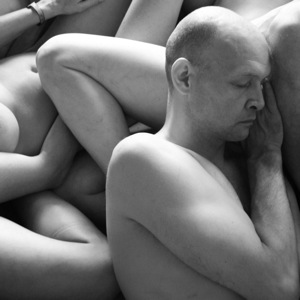
Not all of these concepts could survive on the free market, but some of them inspired other artists such as Dasniya Sommer, Sabine Sonnenschein and Christine Borch. Their art slowly makes its way back into the festivals and institutions, being generously adopted. This is good and it will continue. I am very confident that the wall will come down.
Felix Ruckert, Berlin, October 2012-10-08 www.schwelle7.de
Republished with permission at http://tessawills.com/welcome-to-berlin-welcome-to-our-village/. Originally published in George, Doran, Hargreaves, Martin, Shaw, Thom and Wills, Tessa eds. Dance Theatre Journal 25.2. London: Laban, 2013. Print.
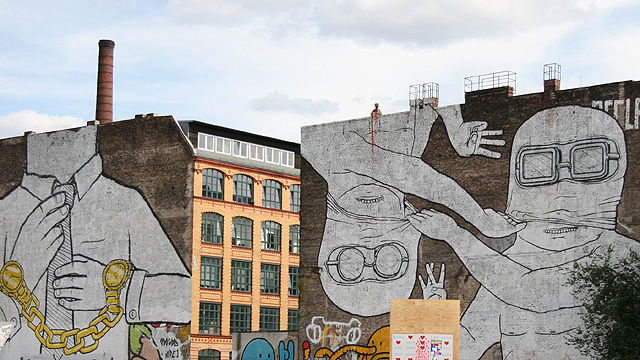
Leave a Reply